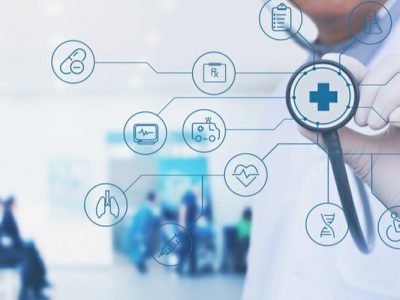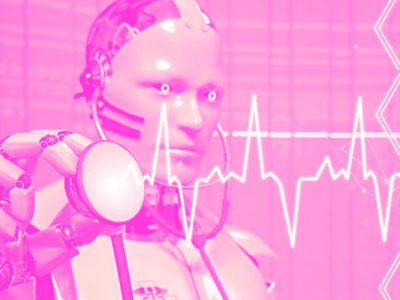
The emergence of Covid-driven A.I. Trends that are constantly Transforming Health Care in 2022.
For fresh insights into treatments and drugs, healthcare professionals are incorporating health tech trends into every aspect of the health care business. The employment of health-tech technologies has become crucial for the healthcare sector, especially when the ultimate battle with the outbreak of Covid-19 is going on. Health-tech tools are virtual aids that are made available to protect the general public. As every sector is turning digital, the healthcare business isn’t far behind. The public finally grasped the usefulness and necessity of health tech services after the outbreak of Covid-19. This article features the emergence of Covid-driven A.I. Trends that are constantly Transforming Health Care in 2022.
Bringing virtual and in-person care closer together
Telehealth visits are praised for their convenience, however, when it comes to manual checks, there is a huge drawback. A doctor cannot undertake a medical examination virtually for obvious reasons, which restricts a patient’s entire assessment at least for the time being. Devices for reporting monitoring are now available. Eko, a digital health business, sells A.I.-powered stethoscopes as well as a hand-held ECG, which assesses a person’s heart health. During a virtual visit, a patient can, for example, live broadcast their cardiorespiratory sounds for their doctor. The tools, which are spreading as a result of the pandemic’s increased need for virtual treatment, move the medical industry closer to totally remote checks that augment in-person appointments.
Telehealth and remote care expansion
While the CMS and major payers eased telehealth regulations that allow providers to continue providing care safely during the pandemic, medical centers, and health systems would continue to consider how to integrate virtual treatment into their long-term care plans once the public health emergency was over. The pandemic has hastened the establishment of remote care delivery for chronically ill patients and those who develop COVID-19 yet do not need to be admitted to the hospital. These AI trends point to a move toward a hybrid care paradigm, wherein in-person appointments will be replaced by a combination of telehealth and also in visits for anything other than follow-ups to immediate treatment.
Patients’ access to lab tests is being expanded
The pandemic is causing at-home Covid-19 fast testing to become more common, which might lead to more at-home diagnostic testing. Patients may do at-home urinary infection examinations or an annual urine test with the help of Healthy.io, a remote clinical testing firm that employs machine learning, intelligent systems, and colorimetric analysis. Varadharajan believes that, at least for some sorts of testing, artificial intelligence will progressively supplant third-party laboratories.
Lowering the cost of radiology
Artificial intelligence isn’t simply speeding up radiology; it’s also lowering the expense of expensive scans and other imaging. That’s attributable in part to the growing use of A.I.-assisted computed tomography scans for identifying Covid-induced pneumonia. But, according to Varadharajan, the next wave of artificial intelligence will go beyond diagnostics to improve the patient experience. This may result in faster magnetic reasoning imaging. Facebook is attempting to enhance MRIs in conjunction with the Innovative York School of Medicine, to develop new technologies to speed up the scanning process.
Visualization of computer vision
In specialty care, computer vision is gaining traction. Physical therapy, which relies almost entirely on the supervision of a physiotherapist, now has the potential to make virtual connections. However, patients may obtain treatment practically anywhere if they have a smartphone camera. Kaia Health, a musculoskeletal digital therapeutics firm uses computer vision to detect motion and posture, giving patients feedback on their workouts. Dental Monitoring, located in Austin, is delivering A.I.-powered equipment to dentists and orthodontists, which the business believes may help them save time and money.
Using technology for passive surveillance
Apple Watches and Fitbits are two of the most well-known wearables, but the wearables market is cluttered. For users who must keep track of many devices, charge them, and manage distinct programs that their devices utilize, having too many alternatives can be daunting. However, A.I. passive monitoring technology has the potential to disrupt the wearables market by introducing technology that does not require patients to wear a gadget 24 hours a day, seven days a week. “Nothing to wear or remember to charge,” Google’s credo was when it entered the sleep and health tracking market with its smartphone gadget. Contactless in-home monitoring systems, which use a sensor to keep track of a patient’s sleep activities and respiration, are a newer approach to patient monitoring.
EHRs are becoming more capable as time goes by
As voice-activated activated assistants like Amazon Alexa and Google Home have solidified a place in customers’ living rooms, hospitals and health systems are letting equivalent technology into patient rooms. This year, Epic and Cerner, both EHR providers, struck agreements to integrate Nuance’s digital assistant into their software, while Epic is working on its ambient voice technology, branded Hey Epic!
Saykara, an AI company, unveiled a new smart speaker that can attend to and understand the meaning of a patient-physician conversation without even being prompted by spoken commands. The firm’s investors include Swedish Medical Group, based in Seattle, and New York-innovation Presbyterian’s division, both situated in New York City.



















